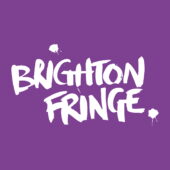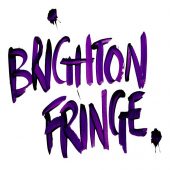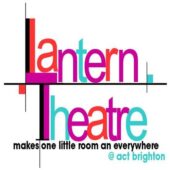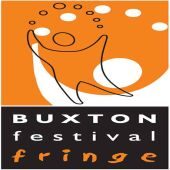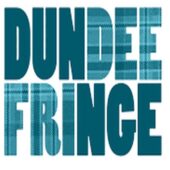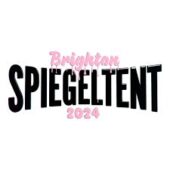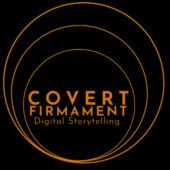
Edinburgh exudes culture, art and community during August at the Festival Fringe. This was only my second Fringe, my first was pre-pandemic in 2019 and I marvelled at this event that encourages theatrical experimentation and has more shows on offer than you could ever possibly watch. That time my experience was expertly curated by friends in the performing arts, so I got to enjoy the festival stress-free, just going from one fantastic show to another. This year was very different.
At the 2023 Fringe I was a reviewer for the first time and supported two shows, Luke Manning: One Manning Show – a clown and character comedy one man show – and Shoot From The Hip – the improv comedy TikTok sensation. This made me think I was ready to choose my own shows and tackle the Fringe monster on my own.
I started with one of my favourite acts from 2019, Laser Kiwi, this time bringing us The Rise of the Olive, only their second Fringe show. Laser Kiwi is one of the most original acts I’ve ever seen, the world’s only surreal sketch circus, as they call themselves. They skillfully join clown, comedy and physical prowess in a way so unique to them. The show starts when they give you a piece of paper listing every sketch and its rating. They lower your expectations with incredibly silly bits to then subvert them by doing hilarious and impressive stunts. I had the pleasure of interviewing them and learned the fluidity of their creative process. They can write a word on a piece of paper – like jenga – and only realise it as a fully performable piece in a sketch years later, aided by the patience that circus gives to performers, where you need years to master most skills.
I also saw some explosive female duos, such as in Egg: Absolutely Fine and And Then The Rodeo Burned Down. Anna and Emily from Egg have the wonderfully deep and complex friendship we all want, and they weave silliness and feminism masterfully in their sketch show. Xhloe and Natasha have an electric chemistry on stage and deliver intricately written, powerful physical theatre.
After a few successful recommended and previously known shows, I found myself overwhelmed by the offer and was mistakenly swayed by all the big newspaper’s recommendations of what to watch as the Fringe newcomer that I am. Sadly most of these shows weren’t the most exciting and felt very unoriginal, or at least they didn’t fulfil my hunger for experimental and unique theatre. This stopped the day I saw Bill’s 44th, one of the highlights, if not the highlight, of my Fringe experience. A silent puppetry show about Bill – a puppet with a paper mache head and human hands, handled by two puppeteers – and his 44th birthday party that he organised for himself. Bill eagerly awaits his guests and tries to keep himself entertained. This show left me speechless, the comedy and the pacing was perfect, showcasing puppetry prowess and physical comedy at its best. Every time you thought a section might be running out, they would move to another, even more creative and surprising than the last. Bill’s loneliness and boredom turns into a surreal dream with the most fun characters and story lines.
I had the opportunity to meet and interview the wonderful people that are Dorothy James, Andy Manjuck and Jon Riddleberger, the creators of the show. I was surprised to learn that their creative process is very organic, and trial and error performances have been key to developing the polished version of Bill’s 44th. I also marvelled at the fact that one puppet can be handled by two puppeteers with such different approaches – Dorothy loves to rehearse and Andy does not.
In the most Fringe manner, Dorothy, Andy and Jon became my friends and it was lovely to get to know and see shows with the creators of such a masterpiece as Bill’s 44th. They also introduced me to the key way to approach the Fringe, through recommendations of people you admire artistically. Two of the best shows I saw were recommended by them, The Last Show Before We Die and Dark Noon. The first is a cabaret about endings, by Hotter Project, the electric duo that is Mary Higgings and Ell Potter. They explore different endings through verbatim scenes, physical theatre, song and dance, as well as mesmerising scenes about their own relationship and the exploration of its potential ending. I’ve never laughed more at a show that broke my heart, ending with a melancholic rendition of Orange Juice’s Rip it Up, which weeks later is still in my head. Dark Noon was recommended by Jon as a show of great calibre and not a typical Fringe show. It tells the incredibly raw tale of the wild west, not the glamorous celluloid version but the brutally realistic one. The South African company, six black performers and one white, perform the typically white characters with white makeup and blond wigs, with witty comedy and mockery of the genre, while relating it to contemporary references and having most scenes end in violence. The production design is sublime, as the cast builds walls and a working train track, while moving live handheld cameras from place to place. The show masterfully weaves film and play. You don’t want to blink an eye and miss a second. The show ends with the performers retelling how westerns came into their lives, stressing their glorification of violence and white supremacy.
Another South African show I saw was JM Coetzee’s Life & Times of Michael K, an adaptation developed for stage by Lara Foot and Handspring Puppet Company (of War Horse fame), telling a bleak war story in Apartheid times with superb puppetry and very expressive puppeteers, which often let go of the puppets and became actors. By chance I ran into one of the puppeteers at another show and congratulated her. She was really friendly and we started discussing her show, from the joys of performing with a stellar team to the oddly placed hand calluses that the puppets leave. She also highlighted her surprise to come to such a white Fringe with a significant amount of ‘First World’ stories. Indeed the two South African shows I saw dealt with the most serious, raw and uncomfortable topics, these felt separate from the rest of the Fringe. She also mentioned The Walk (Little Amal), a Handspring twelve foot puppet of a Syrian little girl which, in real life, has been walked by multiple puppeteers through several countries, raising awareness about refugees. Amal has been celebrated in some countries and stoned in others, reflecting the treatment of refugees.
The perks of an Underbelly pass – due to my poster design for Shoot From The Hip – gave me the chance to see random shows uninformed, and discover hidden gems – another unexpected Fringe strategy that I was glad to come upon. Sophie Sucks Face and Charlotte Fox: Ouroboros the Return are two powerhouse female performers that immersed us in their splendid characters and stories, exuding talent and originality. A highlight was the ‘quirky girl’ song Sophie sings, mocking Zooey Dechanel’s and Kate Nash’s style, whilst Kate Nash was in the audience watching (she loved it). Fall and Flow was also a surprise, masterfully joining martial arts, physical theatre and mesmerising characters.
One of the greatest joys of the Fringe is seeing friends perform and enjoying their successes. I got to see Rosie Holt’s satire That’s Politainment after a skyrocketing social media career. Alex Bertulis-Fernandes’ profound and witty standup is starting to get the recognition it deserves in White Chicks 2. Shoot From The Hip had a sold out run, including the extra performance date they added, getting their long awaited critical and audience acclaim. And Luke Manning performed his solo debut One Manning Show showcasing his hilarious originality and pulling in a substantial audience everyday, even with a challenging 11:40am slot.
Three to four shows a day for two weeks and so many stood out, what a Fringe! Kieran Hodgson: Big in Scotland made me crack up at British stereotypes and identity crises, even if a lot of the jokes were too British for me to completely understand. Viggo Venn’s wonder of a chaotic show, British Comedian, made me laugh from beginning to end, especially when Jack – a little boy from the crowd – basically commandeered the show. Batsu! brought a Japanese game show to life, blending improv, punishment and an ecstatic cheering crowd. How to Flirt: The TED XXX Talk challenged masculinity with exquisitely written jokes and masterful dances by the powerhouse that is Daisy Doris May as drag king Steve Porters (Lock up your daughters!). Police Cops, with two understudies, delivered an extraordinary musical, full of silly jokes, achingly funny puppets and two Latina additions to the cast that can sing and dance to a West End standard.
Latin representation is very scarce at the Fringe, in accordance with the predominant whiteness that the Life & Times of Michael K’s performer pointed out. As a Latina, I always get really excited when I see Latin performers and shows. Playing Latinx by Guido García Lueches was a wonderful surprise, teaching the crowd to be Latin, while mocking the stereotypes the British entertainment industry so desperately wants him to portray. His show was equal parts honest, insightful and hilarious. As a relatively new migrant group in the UK, I felt seen watching him on stage recognising the enormous variety of Latin people.
Reviewing was an incredibly rewarding way to spend the Fringe as well. It started with the stress of writing fast enough to do the artists justice, but I quickly got into a rhythm and started enjoying them. Reviewing changes the way you see shows, from a generic mindset of if they were good or bad, to finding the reason for this and more interestingly, how to make the shows better. As a theatre maker it is a great exercise to think on how to improve shows, whether you liked them or not. Writing for Fringe Review was also a joy, a publication made by theatre makers that aims to lift up artists and be a guide to good theatre, only printing positive reviews and having a more intricate rating system than just stars. It was a relief that if I didn’t like a show I could offer private feedback and wasn’t obliged to publicly destroy a struggling artist. I felt like the performer’s ally, there to reassure them of this rewarding but difficult path. The frequent Fringe Review social encounters were also fantastic, having the chance to meet experienced theatre makers from all over the world, and talk about the festival and their own work.
The elements that come together during the Fringe are so special, being inspired by theatre, bonding over art and getting to know incredible, worldly people is priceless. The serendipity of the festival makes you feel that anything could happen. As special as it is, it is also fleeting. How to return to normal life after two weeks like that?






